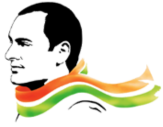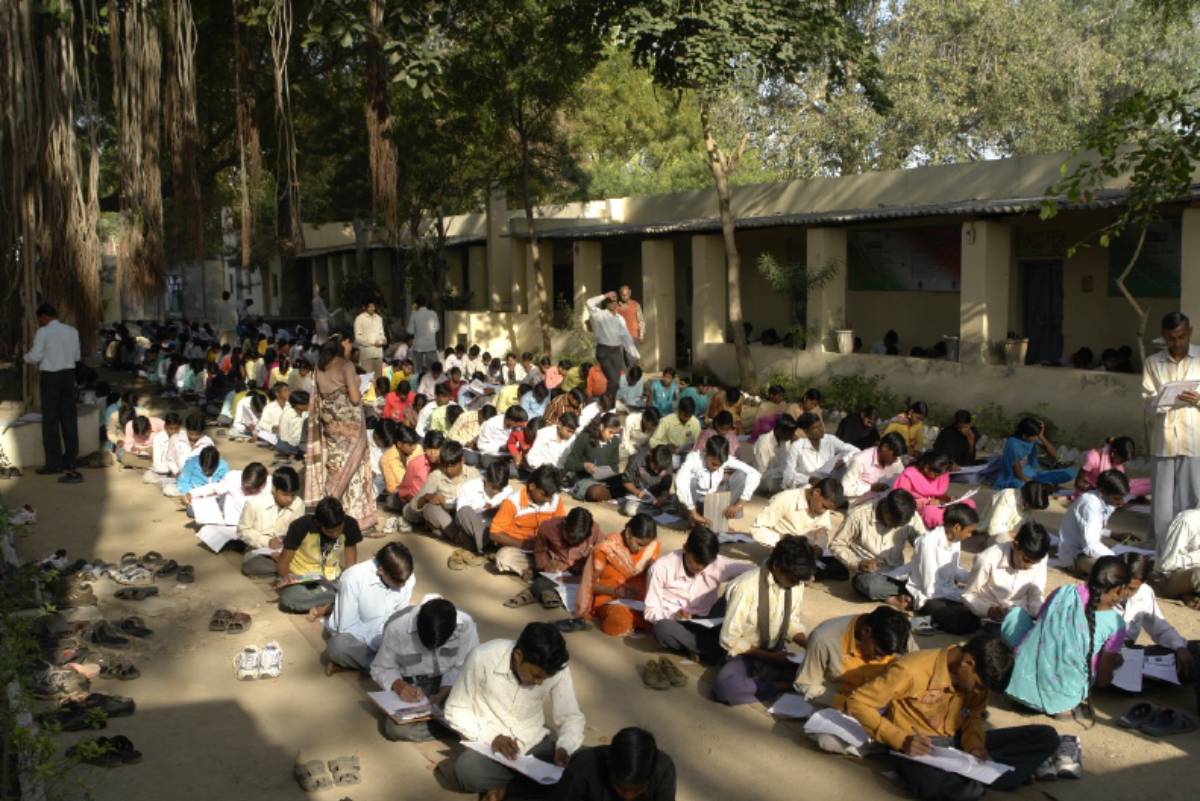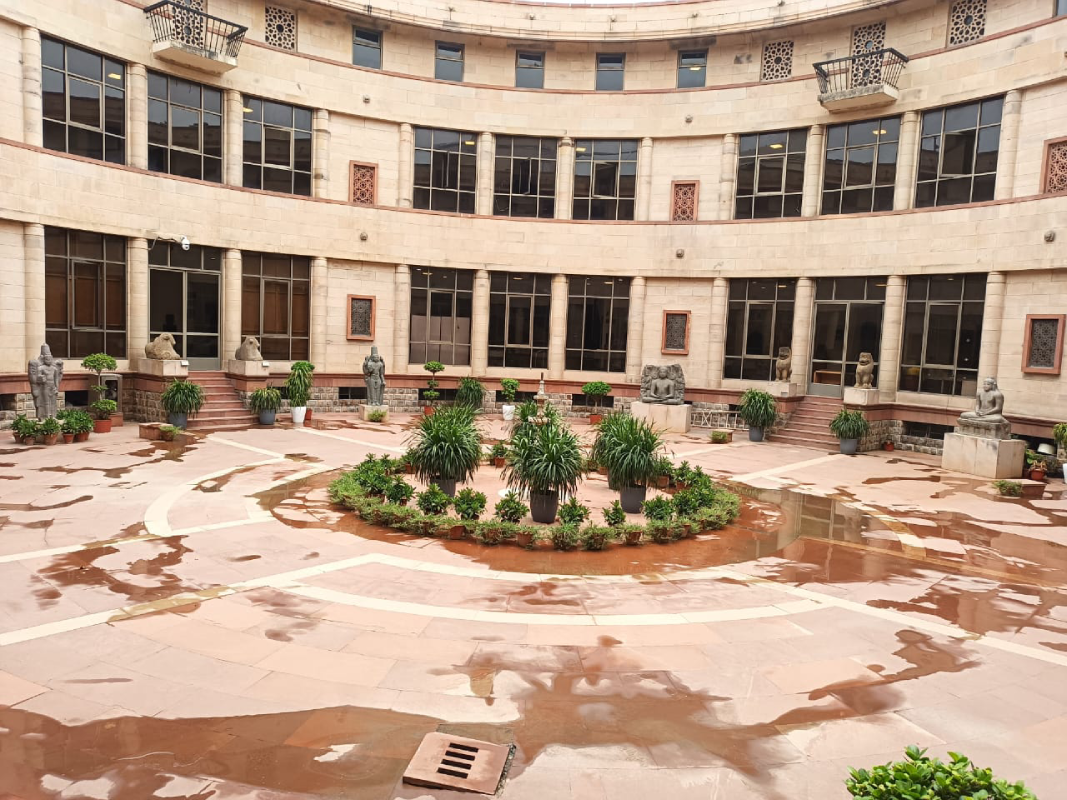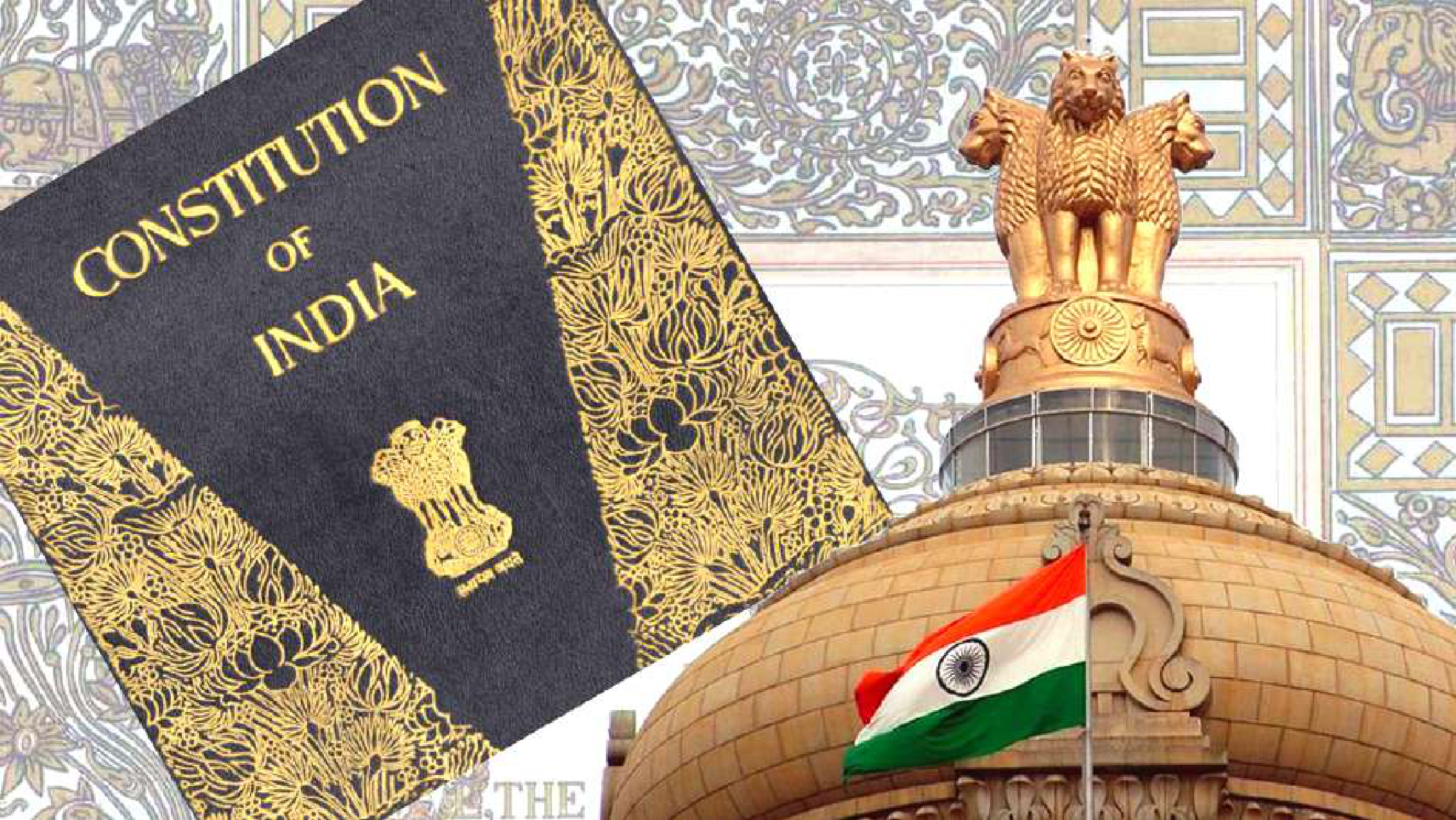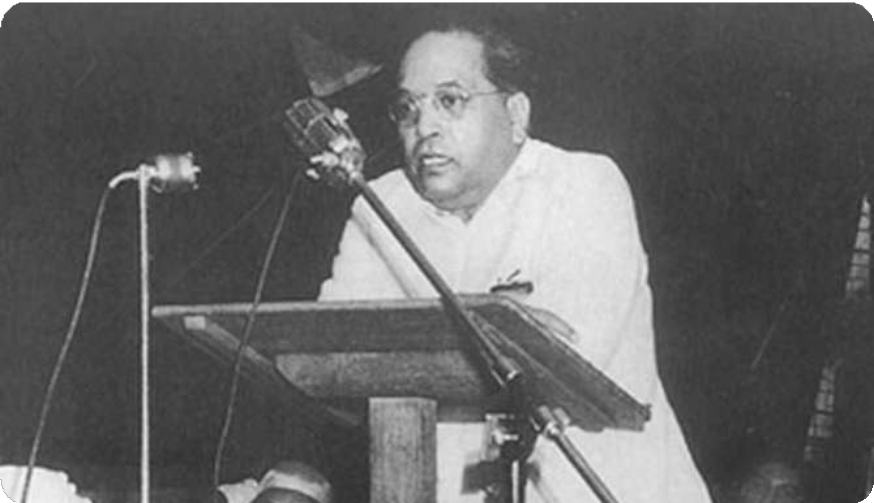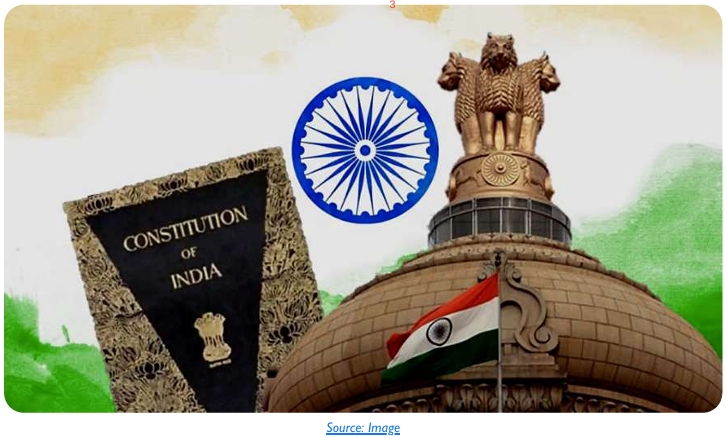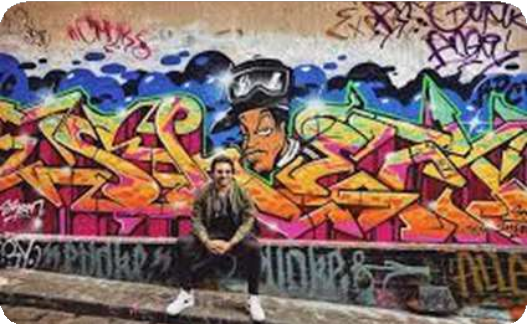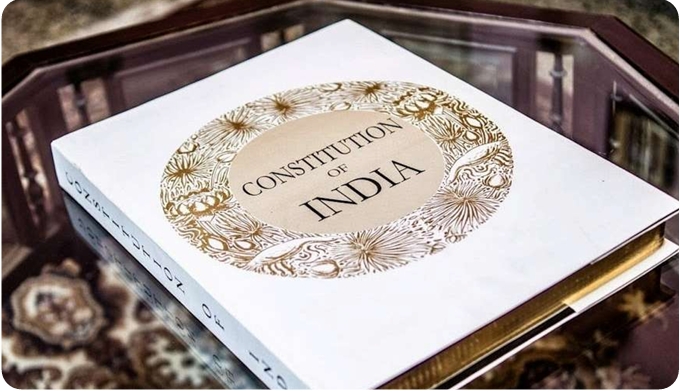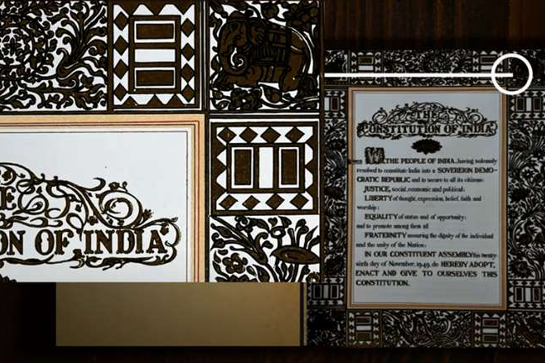Introduction
The resurgence of student activism in India in 2019 is reminiscent of the decades of 1980s and 1990s when Asia saw powerful governments bite the dust in face of student led protests. China, Taiwan, Hongkong, Indonesia, Thailand, Malaysia, Burma and Philippines have been the site of student resistance movement against the State. The protest at Tiananmen Square by students against an oppressive Chinese government in 1998, Reformasi Movement of 1998 in Indonesia, against dictatorship in South Korea in 1980s, `and the ouster of President Joseph Estrada in 2001 are examples of how students have led a strong opposition against a dictatorial and repressive regime. Weiss and Aspinall locate the above mentioned instances of student led protest movements in ‘developmentalism’ which they define as a “ state ideology that entails cooperation between civil and military power holders and technocrats to implement an export driven growth strategy to win popular support for non democratic rule” (Weiss, Aspinall, Thompson, 2012: 2). They further add that in order to understand and study student activism we need to locate it in the “higher education policies, structure of civil society and political regimes and transnational connections” (2012: 4). Scholars of students’ movements and activism, like Altbach argue that students bring with them idealism and often fill a political vacuum in society. The current wave of dissent in India against the Citizenship Amendment Act (CAA) and National Register of Citizens (NRC) which is being led by students to a large extent is being attributed to a political vacuum created by lack of cohesive opposition.
India has seen student mobilisation since the freedom struggle and later during Emergency which was a national issue and later on the issue of caste in higher education (Mandal Commission). Today we are witnessing probably one of the largest organized protests which have now spread across the globe. The students (along with members of the civil society) have taken the government head on and the police atrocities at a University (Jamia Milia Islamia) have triggered off a chain reaction from across the globe. Teachers and students from Oxford, Yale, MIT, Harvard, Heidelberg, Columbia, Stanford and many more have written open letters, organised meetings and marches against State atrocities on students. For the first time in many years, students from even non political campuses like IIT have joined in the protest. Thousands of students have taken on the government fearlessly- speaking out against a repressive and divisive government.
The CAA and NRC debate may have set off a simmering discontent that has been brewing in the student community for a while now. There has been a concerted effort by the Government now and in the past too to promote private universities at the cost of public universities. Several universities have been resisting and fighting against fee hike and, discriminatory hostel rules over the past few years. Universities like JNU have been fighting efforts of the government to change the character of the university through fee hikes for the past 70 days. Things have come to a head- on the 5th of January 2019, with the right wing student wing attacking and assaulting students within the campus and the police force instead of protecting students and faculty was a mute spectator to the violence that was unleashed. Masked intruders entered the campus and beat up students and teachers who have been protesting against the administration and the government in the past months. The students union released a letter which among several things says that they will continue to fight against fee – hike which is a clear attempt to turn JNU into an institution for the elite and rich. Teachers have written open letters condemning the violent attack and the complicit role of the State.
The student community has mobilised for national issues as well as university based issues. Apart from JNU several other universities have been protesting regarding fee hike. Some of the protests have received national coverage and some have not. The protest against fee hike in the JNU attracted a lot of media attention. We begin by describing the historical context of higher education policy. The last section examines how fee hike impacts higher education and the society at large. After the JNU protests some have argued that the government need not subsidise education for all and that public money can be put to better use. We explore all this and more in this article.
Historical Context: Education, Policy and Issues
The two key points raised in the issue of fee hike is that of access to education and quality of education. With literacy being a concern at the time of independence it was important to draft out a vision of education that was inclusive of all sections of society. The Indian system of education differentiated between primary education and higher (collegiate education) since 1882. While the government was responsible for primary education, higher education (college and universities) was to be largely private aided. It was during the national movement that the idea of a national system of education was proposed. The British government had issued orders that students should refrain from participating in any anti-government activities- political meetings, demonstrations and anti partition movements. The Indian National Congress at this juncture came up with a resolution that they would set up a national system of education which would promote- “Literary, scientific and technical education suited for the requirements of the country, on national lines under national control and directed towards recognizing a national destiny.” (Ayyar, 2017)
State and Education: Vision and Planning Post Independence
Back in 1944, the Sargent Report on the status of education recommended that the Central Government should take over more of the financial responsibility of Universities and professional education. It was the very same Sargent report which suggested that the central Indian University Grants Committee be set up which would function as a regulatory body for all the Universities. However the report also states clearly that the UGC should not interfere in the autonomy of the provincial universities. Based on this the UGC was set up through an executive order passed in 1945. Similar suggestions were made regarding technical universities following which the AICTE was set up in 1946 to “stimulate, coordinate, control the provisions of the technical education facilities” (Sargent Committee Reports: 93).
Several subsequent reports post-independence pointed out the need for quality of education and access to education especially in the rural and semi-urban areas. The Radhakrishnan Commission was the first commission set up after independence under the chairmanship of Dr S. Radhakrishnan, the eminent educationist who later became President of India.
Control of education was a matter of much debate – whether it was to be included in the Union or State list. The States were in no mood to concede to the demand of the Centre to make education a Union subject. The result of series of debates and discussion was that education was placed in the concurrent list which would ensure that the states ensure a minimum standard of education and at the same time there would be joint collaboration with the Centre with regard to policies and addressing gaps and preventing duplication. It was this commission which gave the UGC power to allocate grant within limits rather than going through the circuitous route of submitting proposals to the Finance ministry for approval. It was a result of the recommendation of the Radhakrishnan Committee that the UGC was reconstituted as a statutory body in 1956.
Maulana Abul Kalam Azad, Minister for Education was in favour of education being added to the Union list as he was of the opinion that there should be uniformity in how the intellectuals think and this could be achieved if the Centre was in charge of education. He also wanted that the Centre be in charge of planning and standard of education. But this idea was opposed by the States. The result of the discussion was that the Central Universities and research institutes were placed in the Union List. The Union was also in charge of maintaining standard of higher education and oversee the performance of the States with regard to education.
In 1966, the Kothari Commission suggested that India should spend atleast 6% of the GDP on education. It was between 1950-51 and 1965-66 that the number of universities and technical institutes saw a visible jump. It was during this time that the AIIMS, IITs and RECs were established. The universities increased from 27 to 64; the number of art and science colleges increased from 370 to 1536; enrolment in higher education and professional education increased to 13 lakhs from 3.6 lakhs. Over the years the number of institutions and universities increased but this came at a cost- that of quality. In his work titled ‘The History of Education Policy Making in India: 1946-2016, ‘Ayyar (2017) writes that Central and State government policies are meant to ensure equal access to education. According to Ayyar, the idea of free and compulsory primary education may be hard to achieve “due to both administrative and financial reasons”.
Education and Employability: Questions on quality of Education
The Sargent report of 1944 on status of education may well be talking of the problems being faced by the higher education system today:
There has been a general lack of planning in university education and both Central and Provincial Governments have yielded to popular pressure in bringing universities into existence without providing the necessary resources to enable them to function on sound lines…Moreover the universities have been handicapped by the fact that the education given in most high schools have been very inadequate preparation for a university career.
We see an echo of this in Ayyar’s work in which he points out the problem of ‘unemployability’ of most of the college graduates and the wasteful chasing of degrees and diplomas in the hope that prospects of employment would thereby improve.” Similar ideas mark the articles of Mishra and Singh (EPW, 2015) and Sahni and Shankar (EPW, 2015). The question of employability of graduates from higher education institutions remained an issue. Several reports have pointed that while enrolment and number of students may well have increased but the employability of the youth remains a concern and this we can link back to the unplanned growth of educational institutions leading to a lack of quality thereby affecting employability.
Several reports like the most recent National Employability Report for Engineers: 2019, or the NASSCOM-McKinsey Report of 2009) have spoken of the unemployability of engineers given the mushrooming of private technical institutes going so far as to day that 90% of the engineers are not fit to be employed. In 2015, Shankar and Sahni in their article based on a research of economics graduate students argue that most of the social science graduates are unemployable and hence their employability is to be linked to the abysmal school education. They were drawing upon the ASER report that is based on school education. They point that the social scientists form a considerable part of the educated unemployed. A rebuttal was published by Mishra and Singh a few months later that “the higher education system reproduces the learning deficits of schools, but rather it adds to them and closes opportunities for academic growth even of those students who could do well” (Mishra and Singh, 2015). They further point out that it is the lack of ethics and quality among teachers in Universities that has led to this situation.
Cost of Education and the Role of the State
In 1999, when Shri Atal Bihari Vajpayee was Prime Minister leading the then NDA government, the Prime Minister’s Council on Trade and Industry established a Special Subject Group on Policy Framework for Private Investment in Education, Health and Rural Development. The report was given in April 2000. It submitted a ‘Report on a Policy Framework for Reforms in Education’ written by Reliance Industries Limited (RIL) chief Mukesh Ambani (convenor) and Aditya Birla Group head Kumarmangalam Birla (member). Many of the reforms happening now are reminiscent of the recommendations of the Ambani-Birla report presented two decades ago.
The summary of the recommendations of the Ambani-Birla Report (2000) is given in the appendix. It made a push for government investment in primary education but not higher education. The report speaks of ‘investment’ in market friendly and market oriented courses. More and more private players are looking at education as a money making venture and students as mere ‘consumers’. Nandita Narain, Associate Professor at DU, said that report makes “education not a right but a luxury.” Reports show that private education has doubled and is now projected to become a 180 billion industry by 2020.
The MHRD has been asking universities to raise 30% of their funds Among several the implications of fund raising one is that the donor may get to decide on courses which would inevitably be industry oriented and also dictate other terms and conditions like the Birla-Ambani report does. The report clearly says that there will not be a Student Union on campus, no political activity or relation with any political party. In short a sanitised campus which does not promote critical thinking or analysis or provide a democratic space. The sentiments of the Ambani-Birla report are echoed by many who question the ‘utility’ of education from a market perspective.
It cannot be denied that both quality and employability are central to education but so is access to education. Access to education can be impacted one by location/ distance and the cost of education to the students. In this article here we will focus on how several universities have seen a fee hike and fuelled several protests. How does fee hike impact students in particular and education at large will be discussed in this article. We will substantiate secondary literature on student protests with our own field work done in several states across the country.
Nationwide Fee Hike Protests
At the beginning of 2019, the Rajiv Gandhi Institute for Contemporary Studies (RGICS) initiated a study – Education, Ideology and the State. This was to understand a large number of protests that were taking place across the country in what was viewed as intrusion by the state on ideological grounds. Universities across the country were chosen for the study and interviews were conducted with students and teachers in an effort to understand:
- Understanding how ideology shapes relationship between students and teachers and the administration
- National Symbols , nationalism on campus and the role of the State
- Student and Teacher Union, political activity and activism in the University campus
- The main issues facing both students and teachers with regard to facilities in the university, courses, funding, fees, recruitment
For the study, students and teachers from both humanities and social sciences and the sciences and engineering streams were interviewed. As of now we have interviewed about 580 students and 150 teachers in total and in the process of putting the data together.
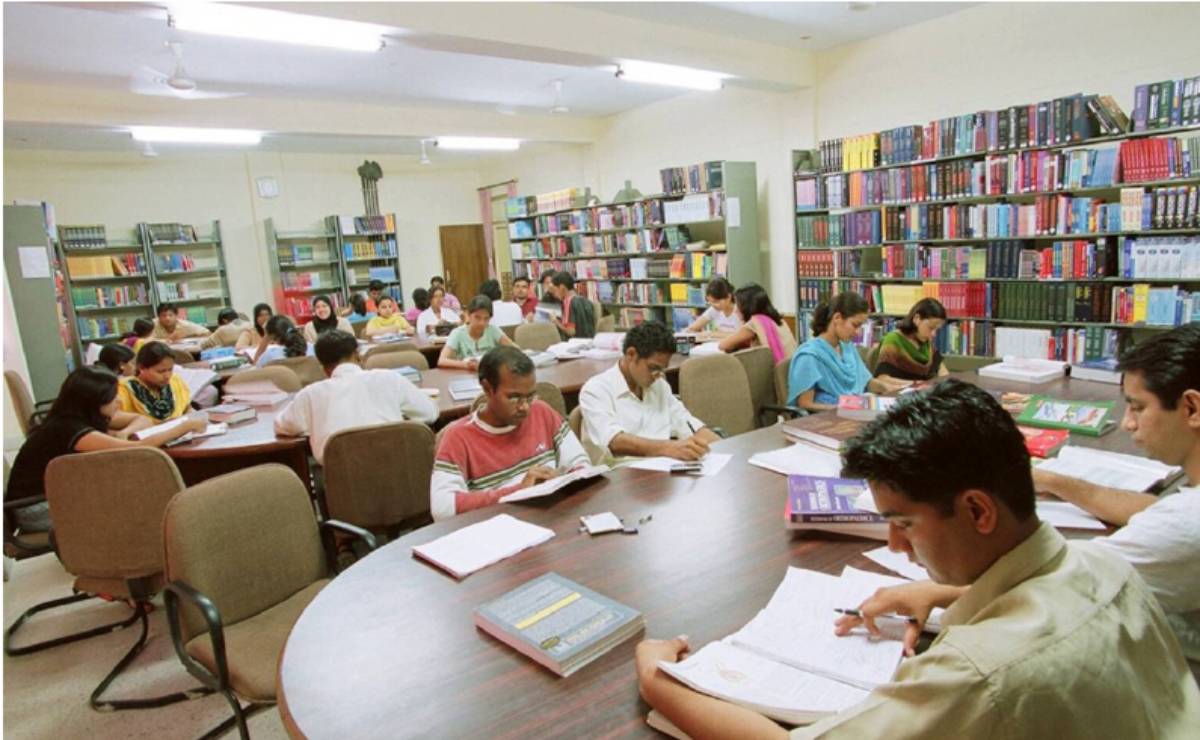
In our study, we found that in 14 out of 15 humanities and social sciences universities and in 14 out of 15 higher technical institutions, the fees had been increased. The only exception in the first category was Gulbarga University and in the second, it was Jadavpur University. In response, the country witnessed several protests with regard to fee hike across the country. JNU has been in the news too in the past few months for their protests regarding the fee hike. The JNU protests have taken centre stage in the debate regarding fee hike and given rise to different aspects of cost of education, the larger vision of education. We will get to that later. The fee hike has been justified by the JNU administration due to fund deficit of Rs.45 cr. The administration proposed the following new fee structure:
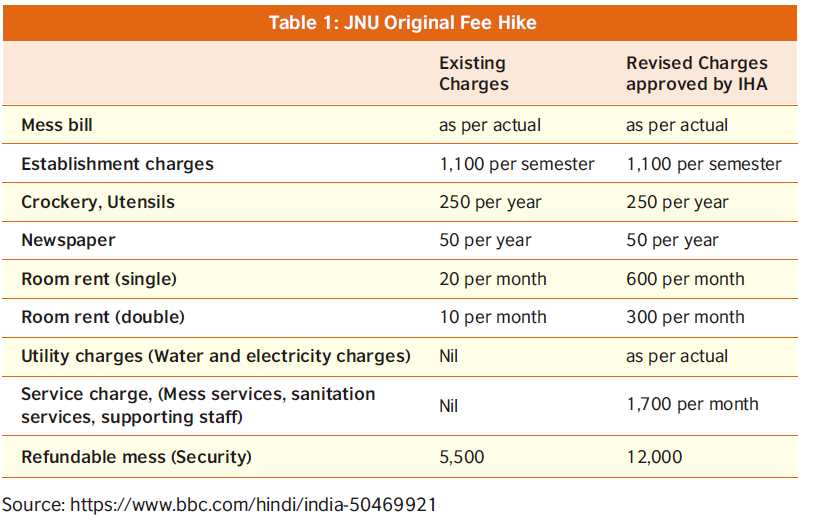
We reached out to students of JNU and spoke to them regarding the fee hike. A student remarked- “We cannot let this happen, if we let this go then there is no coming back”. We witnessed the students protest march where in they went to each centre and shouted slogans and did not permit entry to teachers or students at that time. They were making posters informing others of the proposed fee hike and what it means. Added to the issue of fee hike especially in hostels, there was another point of contention that of dress codes in hostels. We also spoke to teachers about the student protests. A student who was shouting slogans said, “There are many in my class who cannot afford these fees, and that is what the Government wants. They want to change the character of JNU and we will not let it happen”
Subsequently many editorials and articles were written by professors and students alike on how their life and life experience changed after studying and teaching at JNU. This was because it gave equal opportunity to the poorest to study. Both the professors – one retired and one associate were in favour of the students protest. A retired professor looking at the students going from centre to centre said, “This is JNU culture- people don’t understand it. They think if a student is involved in a protest s/he won’t study. But that’s not true. This has been JNU culture from the 70’s when we were students here. You will see that the same students who are marching now will go and study in the library in a little while.” Another professor said “the students were being pushed to the wall and there was no way of this but to protest. The teachers we spoke to were not complaining rather were sympathetic to the cause of the students.”
With the Vice Chancellor of JNU ignoring the genuine demands of the students, the students staged a protest in front of the MHRD and after many days of struggle a 50% roll back was announced. But the students are still fighting as they think that this roll back is not sufficient. As mentioned in introductory section, the protest against fee hike has taken a turn for the worse with teachers and students, who have been speaking out against the fee hike and other positions taken by the administration, being attacked by students belonging to right-wing political outfits. The students union has issued a long letter stating that they will continue to protest against the fee hike, fund cut, seat cut and the revised entrance exam rules. The JNU Teachers Association has written in to the President – Ram Nath Kovind stating that the very fact that the administration has chosen to target those who were protesting against the fee hike – “lets the cat out of the bag”.
Table 2 shows the revised fee structure.
Apart from the tuition fees when hostel fees are increased it becomes a huge problem for those who cannot afford to take up accommodation outside especially in metro cities. This further acts a deterrent for not only the students who are struggling with finances but also women whose families are not ready to let them stay on their own. Kanupriya, a student leader of Punjab University asked, “Is education a commodity like onion that it should become expensive?” As mentioned earlier not only JNU but several other universities across the country are being subjected to fee hikes.
In November 2012, the IIT council recommended an 80% hike in undergraduate courses, which would amount to Rs 90,000 per year. It came into effect in 2013. The HRD ministry justified the increase by citing that the expenditure on every student is around 2.25 lakhs. The government quoted the Anil Kakodar report which wanted the IITs to become financially independent. The only exception was the fee waivers given to scheduled and scheduled tribe students and disabled students. Keeping in line with this in 2016 the fees of M Tech in IIT was increased from 90,000 to 2 lakh. The ministry announced a fee differently abled, SC and ST and families with lower income.
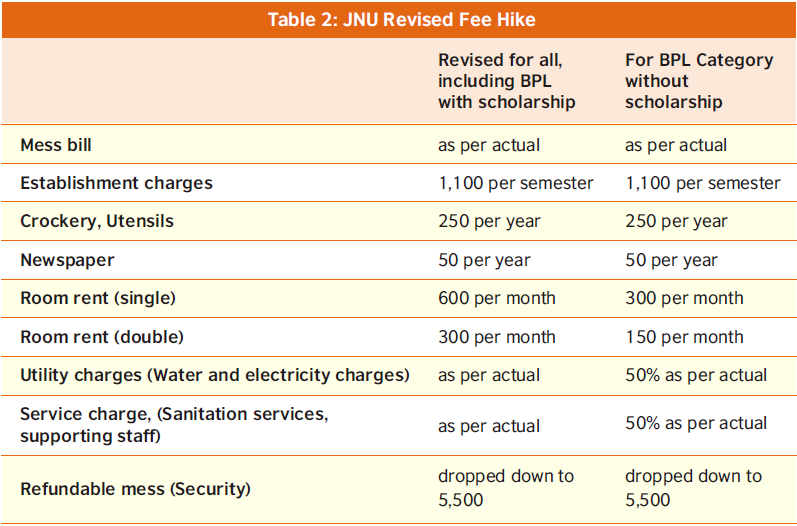
The NITs saw a similar fee hike after a proposal was sent by the NIT council. The fees increased from Rs 70,000 to Rs 1.25 lakh per annum. There were protests against the rise. A student from NIT Patna said that the withdrawing of scholarship had caused anger in the community. The boy stated that he received scholarship for two years but not the final year. As a result students who are unable to afford the fees once the scholarship has been withdrawn are forced to drop out. On the other hand the fee has also increased from Rs 73,000 to Rs 120,000 per year from 2016. What has made life difficult for students is that under the national scholarship scheme, resulting in additional paper work and administrative procedures. The scholarship has been reduced to half and students have to run from one office to another.
Similar concerns of scholarship amounts being reduced to half were voiced by students (SC/ST/OBC) of Nilamber Pitamber University in Jharkhand. In addition to this he is subjected to demand for bribes and also humiliated.
Our interviews in NIT Warangal added a different dimension. A student said, “They mentioned that we will provide fee waiver for SC/ST student as like other NITs I didn’t pay the fee as per their instruction. Later when I am collecting no dues they asked me to pay the fee they stopped my consolidated grade reports” If the SC/ST waiver is not honoured by NIT then it would mean that many more students will be forced to drop out and also prove to be a deterrent for many to seek higher education.
The reader will observe that out of the 31 Universities included on the study, only two have not seen any fee hike- Periyar University in Tamil Nadu and Jadavpur University in West Bengal. This is a harbinger of things to come how students and their families have to face the brunt of increasing cost of education. In the following section we will see more examples and details of fee hike taking place in several universities.
Savitribai Phule Pune University saw a substantial rise on the course fees of Masters in Social Work. The hostel fee has also increased by a substantial amount. Students of Mahatma Gandhi Antarashtriya Hindi Viswa Vidyalaya protested against a fee hike in 2015. Most of the students of MGAMVV belong to the SC/ST/OBC categories and hence a fee hike would mean drop outs. Similarly in Lucknow University there has been a regular fee hike since 2005 and it was even more problematic for students as the fee was raised during the course. Students pursuing the MBA course were asked to pay Rs 45000 more as the fee had increased to Rs 75,000 for the students. They were paying Rs 30,000 in the earlier semesters. Fees of some courses which were earlier Rs.1400 is now Rs 36,000 and other courses have seen a rise from Rs 1260 to Rs 24,000. (Sengupta: 2017) The current government is more inclined to universities raising their own funds rather than being funded by the government. JNU is one such example and so is Jamia Milia Islamia (JMI). In 2016 and 2017, fee hikes were proposed. Both the times the fee hike was rolled back due to student protests. The reasons cited for the increase refers to the MHRD’s expectation that university should mobilize resource internally. In 2019, hostel fees were hiked by Rs 1300, apart from the nominal increase made every semester. The students were successful getting the decision of fee hike rolled back.
TISS is another example of an institute which has been asked to raise its own funds. TISS started in Mumbai has now has campuses in Guwahati (2012) and Hyderabad (2013) and has got new affiliated centres in Patna and Tuljapur also. The 180 ad hoc faculty are funded by private agencies like TATA trust and no reservation has been implemented during recruitment. Since 2013, TISS is being asked to fund itself, and raise 30% of its own expense. This forced the institute to hike its fee by 46% and in some cases upto 100%. Fees went up to Rs 61000 for OBC students per year and the SC/ ST students will also pay Rs 60,000. The repercussions are already there to see – the OBC student community is seeing an increasing dropout rate, the SC/ST may soon follow.
The students of Presidency College in West Bengal also met with success when the counselling fees were increased to Rs 500 and then brought down to Rs 100 following protests by students. In 2019, Viswa Bharati students spoke up when the fees for general students was doubled and that of SAARC students increased by 10 times. Overall the fees was increased by 20%-30%.In 2016, Calicut University too there were protests as the fees for examination related services were increased by 20%. The protests led the University to rethink and the university decided to roll back the fees.
All India Students Federation opposed fee hike in engineering courses and law courses in Osmania University and Hyderabad University saying that the norms of the Telangana Admission and Fee Regulatory Committee (TFRC) have not been followed. The TFRC is also in charge of fixing fees for the unaided professional colleges in Telangana for 2019 2022. Indian Institutes of Science Education and Research (IISER) too have been subjected to fee hikes since 2016 by the MHRD. The MHRD minister said that the fees of IISER are very low and need to be increased progressively. In May 2017, a council represented by the IIT and IISER chaired by HRD minister Javadekar decided that the fee hike should 10% every year The fees were increased from Rs 2500 to Rs 3500 in 2016. The fee for PhD was increased from Rs 700 to Rs 2400, against which the students protested. A fee revision example in IISER is: Rs 7000 to Rs 14,000 six months ago, now which has again increased to Rs 24,000.
In Delhi – several colleges under the Delhi University has seen a steep fee hike. Among other Universities which have raised fees and witnessed protests are IIMC (Indian Institute of Mass Communication), In December 2019, Indian Institute of Mass Communication students protested recently against the unaffordable fee hike and administration’s turning a blind eye to the problems that students would face. English journalism would cost Rs.168500 for a 10 month course beside the mess dues, which is unaffordable. Hostel and mess fees are around Rs.4800 for men and Rs.6500 for women. Ambedkar University too has been in the news. There were protests against the alleged 10% fee hike in Ambedkar University that takes place every new batch. The administration of the university denied the claim. Not all fee hikes have met with protests.
In NEHU a fee was revised for all the courses and published in 2018. This is the official notification in the university website. Bangalore University syndicate approved the increase of fees of its affiliated colleges in order to manage the revenue crunch. A fee hike of 5% to 10% in all categories was announced. The fund crunch happened mostly due to the trifurcation of the university. Two new universities were formed from the parent university. Even Open universities cater mostly to the unprivileged sections have also seen a fee hike. A total of 163 courses in IGNOU will see a fee hike by 10- 20 %. This again has been due to the reduction in fund for the central varsities. In Himachal Pradesh University courses like B.ED degree course compelled to spend Rs.16000 more, from Rs.84, 870 to Rs 98000 in 2019-2021. Besides tuition fee there is an extra 10,000 charged. An additional charge of 7% will be levied on the current fee which would amount to Rs 5880. It is clear from the examples shared in this section that almost every government funded university and institute is headed for a fee hike. What are the implications of a fee hike for the students and the nation? We will examine this is in the next section.
Implication of Fee Hike – Reduced Access to Higher Education
The mushrooming of private institutions is an indication of how ‘lucrative’ education is as a business model. If we go back to the Sargent Report which we discussed in the very beginning – one of the recommendations given by it was that the Government role and expenditure on education should increase with time. Unfortunately, with the progress of time, the Government is slowly withdrawing from the field of education. This is evident from the share allocated to education in the budget- a mere 3.7%. The CAG report of February 2019 states that Rs 94,036 crore of the secondary and higher education cess and Rs 7,298 crore of the research and development cess remained unutilised.
It is indeed problematic when a Government decides that it is not responsible for education of its youth. After independence several educational institutes were set up to shape the minds of young men and women. The youth was seen as crucial in nation building and education was the first step towards that. For example, see what a more recent institute set up by the government has to say. The IISER website says, “An overarching goal of the IISERs is to enable students to shape the nation by inventing and implementing sustainable solutions for societal problems through research in science.” Yet, we found that most of the dropouts from higher education institutions belong to the disadvantaged groups –SC/ST. The government aided technical institutions which gave a fee waiver or had low fees were essential for students from economically and socially deprived groups. Education at these institutions can ensure social mobility for the families. In contrast the fee hikes push them back into the poverty cycle.
Here is the dichotomy that is presented when we look at education as merely ‘utilitarian’ versus something that shapes your mind and life beyond textbooks and jobs- it is a step towards equality, dignity and diversity. The testimonials that came out when the JNU fee hike was announced spoke of children of vegetable sellers, manual scavengers and poor farmers getting an opportunity to study and without any discrimination by teachers or students. These children went on to become teachers, administrative officers and professionals thereby changing the lives of their families for ever. Fee hikes will change all this – the high enrolment in higher education will be replaced by dropout or worse still close it for the poor and perhaps affect even women. Families hesitant to spend on education of girls will refuse to do so in the face of exorbitant fees thus reducing the chances of women pursuing higher education.
Instead of ‘investing’ in the youth and ensuring that the vision of education for all dreamed of by our freedom fighters during independence, the State is withdrawing its support to public universities which give a chance to people across class, caste and region to study. Public universities have provided thousands of young people from varied backgrounds to access education and an opportunity to a life of equality and dignity. If education becomes inaccessible to the youth today we cannot hope to build a healthy democratic nation. We will regress to the times when education was for a select few –widening the gap between have and have not’s and creating a feudal, elitist society which is against the Constitutional values of our nation and the dream of our social reformers who fought for equality through education.
Conclusion
Be it the fee hike protests or anti CAA /NRC protests – what the ongoing protests have shown is that the student community in India and across the globe is not a passive one. Violence and repression by the state on the student community has been met by condemnation and solidarity by students and teachers alike from Universities in India and abroad. Much like the students in South Korea, Indonesia in the past who spoke up against a repressive government, the students in India today are speaking up against the Government on both national and university level issues. Altbach one of the leading scholars on student activism writes, “Without stress on family or caste, the university provided at least a partial model of what a modern society could be like.” (1970: 75). It is certainly true that students have been a major force in the national development of many important Asian nations, and are still a source of political power in their societies”( 1970:84). In his analysis of the student movements and protests across the globe, Altbach writes that the 1960s saw the students speaking up against the Vietnam War, the 1970s saw a decline of student activism in the West. Asia on the other hand witnessed resurgence of student activism as a response to the dictatorial Governments in power in the region. The students of India have risen up against attempts of the government to deny them the right to affordable education and freedom of thought and expression and the right to dissent.
References
Ayyar, R.V (2017) “History of Education Policymaking in India, 1947–2016”. OUP, New Delhi
Weiss and Aspinall, (2012) Student Activism in Asia: Protest and Powerlessness, University of Minnesota Press, Minneapolis
Altbach Philip G.(1970) Student Movements in Historical Perspective: The Asian Case Author(s): Source: Journal of Southeast Asian Studies, Vol. 1, No. 1 (Mar., 1970), pp. 74-84 Published by: Cambridge University Press on behalf of Department of History, National University of Singapore
Mishra, Singh, “Continuum of Ignorance in Indian Universities” EPW, Vol 50, Issue 48, 28 Nov 2015
Sahni and Shankar, “What does a MA know: Postgraduate learning deficit and diploma disease in social sciences” EPW, Vol 50, Issue 31, 01 Aug 2015
http://censusindia.gov.in/2011-prov-results/data_files/india/Final_PPT_2011_chapter6.pdf
Ambani, Mukesh and Kumaramnagalam Birla (2000). ‘Report on a Policy Framework for Reforms in Education’, Govt of India, Development Prime Minister’s Council on Trade and Industry, Special Subject Group on Policy Framework for Private Investment in Education, Health and Rural.
Inaccessible athttps://www.nic.in/pmcouncils/reports/education/edu-summ.html
Executive Summary accessed at http://people.ischool.berkeley.edu/~joyojeet/PMCouncil.htm
https://punemirror.indiatimes.com/pune/civic/karve-institutes-fee-hike-is-illegalth sppu/articleshow/59584041.cms accessed on 12 December 2019
https://www.timesnownews.com/education/article/iit-council-meeting-2019-thrust-toth improving-rankings-fee-hike-for-m-tech-courses-and-other-key-points/496496 accessed on 4 December 2019
th https://www.orfonline.org/expert-speak/increasing-m-tech-fees-in-iits-56715/ accessed on 4 December 2019
https://www.tribuneindia.com/news/archive/shell-out-rs-16k-more-for-bed-863776 accessed th on 16 December 2019
https://www.hindustantimes.com/education/ambedkar-university-students-want-fee-hiketh review/story-E8PwwW18PkGBhtGC9TUwjO.html accessed on 13 December 2019
th https://www.bbc.com/hindi/india-50469921 accessed on 13 December 2019
http://www.catchnews.com/india-news/students-win-this-round-ftii-backs-down-on 600-feeth hike-age-limit-for-admissions-1475256712.html accessed on 10 December 2019
https://www.indiatoday.in/education-today/news/story/ftii-pune-344068-2016-09-30 accessed th on 10 December 2019
https://punemirror.indiatimes.com/pune/civic/students-of-ftii-protest-feeth hike/articleshow/62479311.cms accessed on 10 December 2019
https://www.thehindu.com/news/cities/Delhi/ignou-courses-fee-hiketh opposed/article21444596.ece accessed on 13 December 2019
https://www.thehansindia.com/news/cities/hyderabad/all-india-student-federation-opposesth fee-hike-in-engineering-colleges-540507 accessed on 13 December 2019
https://www.thehansindia.com/telangana/telangana-government-constitutes-11-member-tfrcth 541860 accessed on 13 December 2019
https://www.thehansindia.com/news/cities/hyderabad/fee-hike-for-law-courses-flayed-573222 th accessed on 13 December 2019
https://theprint.in/india/its-not-just-jnu-several-institutes-across-india-are-witnessing-studentth protests/323297/ accessed on 13 December 2019
https://timesofindia.indiatimes.com/city/kozhikode/calicut-varsity-decides-to-rollback-feeth increase/articleshow/52736532.cms?frmapp=yes&from=mdr accessed on 7 December 2019
https://www.dailypioneer.com/2016/delhi/colleges-affiliated-to-ip-university-hike-fee.html th accessed on 7 December 2019
https://www.hindustantimes.com/education/most-du-colleges-hike-ug-course-fee-checkth details-here/story-E35YwpN5mXqyJrSSyw6TjI.html accessed on 7 December 2019
https://timesofindia.indiatimes.com/city/lucknow/mba-students-at-lu-protest-sudden-hike-insemester- fee/articleshow/70952718.cms?from=mdr
https://timesofindia.indiatimes.com/home/education/news/Jamia-Millia-Islamia-faces-studentsire- over-fee-hike/articleshow/51711950.cms
https://nehu.ac.in/announcement/display/188/Notification-Revision-of-fee-for-allcoursesprogrammes- in-the-University
https://www.hindustantimes.com/cities/jamia-rolls-back-fee-hike-after-students-protest/story- IrOD6kRNCfEGbNwHRAfE0I.html
https://timesofindia.indiatimes.com/city/delhi/jamia-students-call-off-strike-on-hostelfees/ articleshow/60861851.cms
https://www.thehindubusinessline.com/specials/india-file/fee-hike-iitians-are-feeling-theth pinch/article30148946.ece accessed on 13 December 2019
https://www.newsnation.in/education/more/iimc-fee-hike-students-call-for-protest-to-go-onth strike-today-246157.html accessed on 13 December 2019
https://www.edexlive.com/news/2018/jul/13/after-jadavpur-sit-in-students-of-presidencyth university-in-kolkata-protest-over-hike-in-counselling-3417.html accessed on 10 December 2019
https://economictimes.indiatimes.com/industry/services/education/after-iits-nit-fee-hiked-tors- 1-25-lakh-from-rs-70-000-per-annum/articleshow/52907233.cms?from=mdr accessed on 10th December 2019
https://www.thehindu.com/news/cities/bangalore/bu-increases-affiliation-fees-to-overcomerevenue- crunch/article28740179.ece accessed on 10th December 2019
https://indianexpress.com/article/education/iit-students-plan-to-protest-against-mtech-feehike- 6110770/ accessed on 10th December 2019
ht tps: / /www. thehindu.com/news/nat ional / fee-hike-massive-say- i iser -students /article18957199.ece accessed on 10th December 2019
https://indianexpress.com/article/education/kolkata-visva-bharati-students-withdraw-protestover- admission-fee-hike-5743212/
https://www.patrika.com/allahabad-news/st accessed on 12th December 2019 udents-protestin- allahabad-university-against-fee-hike-1552484/ accessed on 12th December 2019
https://www.hindustantimes.com/education/most-du-colleges-hike-ug-course-fee-checkdetails- here/story-E35YwpN5mXqyJrSSyw6TjI.html accessed on 12th December 2019
https://sabrangindia.in/article/why-fee-hikes-are-death-education-india accessed on 12th December 2019
https://www.deccanherald.com/opinion/main-article/malaise-in-higher-education-778569.html accessed on 12th December 2019
https://www.outlookindia.com/magazine/story/india-news-why-are-students-angry-is-conflictover- public-funded-higher-education-only-reason/302422 accessed on 12th December 2019
| Appendix
Ambani- Birla Report: Summary of Recommendations 1. Primary and Secondary education: Make primary education compulsory and free. Primary education must be on top of the education agenda. Secondary education must be compulsory as well. There is no getting away from enforcing the Constitutional commitment to compulsory education for children up to the age of fourteen years. 2. Teaching: Bring about regulations for continuous teacher training and quality upgradation. 3. Technology: Leverage our vast and growing resources in information technology to bring about smart schools that integrate computers, networks and content. 4. Sensory Learning: Migrate from teaching to sensory learning in pre schools and in primary education order to provoke curiosity. The accent must be on fostering creative joy and healthy psychological development. 5. Learning to Learn: Emphasise learning through practices and experi ences. Transform teacher’s role to one of a facilitator. 6. Vocational Education: Introduce compulsory vocational training in an intensive manner from the secondary level onwards. 7. Distance Education: Promote distance education as an alternative system of education on par with the formal system of education. 8. Value Systems: Emphasise value education at pre-primary level and reinforce it in primary, secondary and higher education. 9. Common National Content: Introduce a common national system for educational content at the school level, after providing for regional and local variations, especially with respect to languages, history and culture. 10. Decentralisation of Management: Decentralise education management. Devolve to the Panchayat level financing and management of education at the primary and secondary level as well as literacy programmes. 11. Common Admission Tests: Institute a common system for admissions to professional courses based on national standardised tests on the lines of SAT, GRE and GMAT. Concurrently, abolish the system of migration certificates and allow students to move from one institution to another based on a system of transfer of professional credits. 12. Market Oriented Education: Encourage schools of learning to constantly upgrade content and facilities to make them more market oriented. 13. Education Infrastructure – Hardware: Fund infrastructure for govern ment schools, buildings, telecom networks, and computers on a priority basis. Progressively reduce the funding for universities and make them adopt the route of self-sufficiency, to achieve this. 14. Education Infrastructure – Content Development: Continuously reflect latest advances in content development. Utilise evolving tools and techniques for developing content that is contemporary. 15. Government Role: Confine the responsibility of the Government to: · funding and ensuring that primary education is compulsory and free, · funding and ensuring that secondary education is compulsory, · funding and bringing about 100% literacy, · supporting disciplines that have no market orientation, · selectively supporting and part funding centres of higher learning, · providing financial guarantees for student loans, · ensuring uniformity in content and quality, · and education development planning.
16. Government Controls: Give institutions not depending on government for funding or having low levels of funding to have operational freedom and flexibility to innovate. 17. Private Universities: Legislate a Private University Bill to encourage establishment of new private universities in the fields of science and technology, management and finance areas. 18. Rating System: Institutionalise a system for periodical rating of all educational institutions in India schools, colleges, institutions and universities- by independent agencies analogous to a Standard and Poors or CRISIL in the financial sector. 19. Foreign Direct Investment: Allow foreign direct investment in education. To begin with, limit this to science and technology areas. 20. Financing: Establish an education development fund for primary and literacy education. Exempt donations to this fund from income tax. Concurrently, develop a credit market for higher education to finance the cost of education. 21. Marketing Indian Education Abroad: Encourage Indian institutions and universities to attract overseas students. Initially, establish international schools in all our existing centres of excellence, which have international reputation. 22. Politicisation: Enable all political parties come to an understanding that they will keep away from universities and educational institutions. Ban any form of political activity on campuses of universities and educational institutions. 23. Education and Economic Freedom: Keep the economy free from controls to foster new opportunities that creates a market for education. 24. Research in Education: Encourage research right from undergraduate level in all fields. 25. Physical Education/ Extra-curricular activities: Encourage sports activities by providing the necessary infrastructure from the primary school level. Encourage extra-curricular activities at the primary and secondary levels by setting aside one day per week (preferably Saturdays) for this activity. 26. Upgrade RECs/ ITI s: Upgrade the curriculum, infrastructure and facilities in the RECs and Industrial Training Institutes to meet the envisaged higher demand for skilled technical manpower. Provide higher autonomy and freedom to these institutes. 27. Trained Teachers: Make trained teachers serve for a specified period in the rural areas as part of their development. 28. Alternative Education Opportunities: Introduce a variety of programs to provide alternative education opportunities for working and underprivileged children such as flexible schedules
Executive Summary accessed at http://people.ischool.berkeley.edu/~joyojeet /PMCouncil.html Inaccessible athttps://www.nic.in/pmcouncils/reports/education/edu-summ.html |
